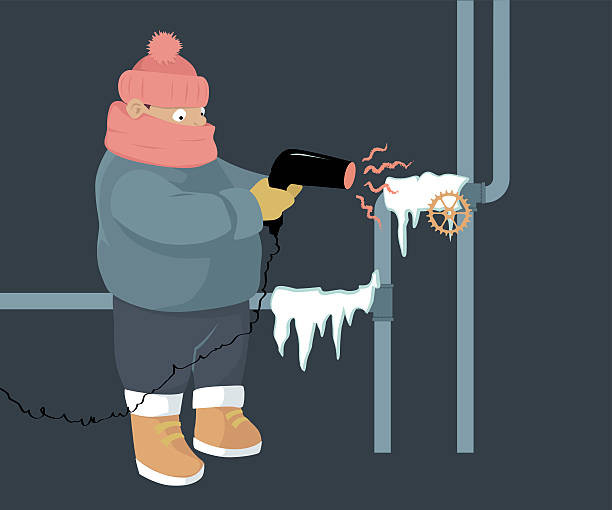Resident Information : Home winterization guide
Here are some local agencies that can help with weather-related emergencies:
Williamson County Emergency Services
Warn Central Texas
National Weather Service Austin-San Antonio
Cold weather is fast approaching in our area, necessitating winterization processes for homes. The following checklist will help protect against major damage to your home and property during a winter freeze. It is important to note with regard to this checklist that residents should consult professionals whenever needed.
 INSIDE
INSIDE
Get the chimney inspected and cleaned.
- Steps include scheduling a chimney inspection, cleaning the flue, installing a chimney cap, repairing masonry damage, and replacing worn dampers and gaskets.
Drip water from the faucets.
- Running a trickle of water through the pipes helps prevent them from freezing and potentially bursting. For pipes to freeze and burst, the temperature only needs to get down to 20 degrees Fahrenheit.
Get the heating, ventilation, and air conditioning (HVAC) system inspected to ensure it will last all winter.
- Actions needed include changing the air filter, cleaning the system of dust and dirt, checking the pilot lights or electronic igniters, making sure the thermostat functions, and covering the outside unit of the AC.
Test carbon monoxide and smoke alarms. Replace alarms that are older than 10 years.
- After checking the batteries, hold down the test button on each unit for a few seconds until you hear the alarm sound. If no alarm sounds or the sound is too soft, replace the unit. Hold canned smoke 2-3 feet from the unit to make sure it still works.
Seal leaks and cracks around bathroom and kitchen pipes. Insulate the pipes.
- Water pipe insulation is relatively inexpensive and can be found at all home improvement stores and online. The most common type is made from foam and can be cut to required lengths. If you are not comfortable working with caulk and pipe sealant, consult a professional to ensure leaks and cracks around pipes are sealed.
Reverse the direction of the ceiling fans.
- Experts recommend running ceiling fans clockwise at the lowest speed in the winter. This pulls the cooler air up to the ceiling and disperses warmer air through the room.
Check attic insulation for areas in need of repair.
- If you are not sure how to measure proper insulation, consult a professional to ensure the attic is properly insulated.
Stock up on necessities in case of power and water outages.
- Essential items include bottled water, nonperishable food, candles, lighters, matches, and batteries.
OUTSIDE
Trim trees hanging over the house and cars.
- Besides protecting trees from insects and disease, winter pruning helps ensure ice will not accumulate on branches and snap, potentially causing property damage. If you are not familiar with the proper methods of pruning trees, it is recommended that you consult a professional.
Clean the gutters.
- Water, mud, leaves, and other debris that is trapped in a home’s gutters can freeze in the winter and severely damage the gutter system and possibly even the home. A broken gutter system can lead to improper runoff and result in structural damage to a home.
Winterize the pool and check insurance coverage.
- In addition to cleaning the pool filter, checking water chemistry, deep cleaning the pool, and running the pump during freezing conditions can keep the pipes from freezing and cracking. If you are not familiar with proper pool winterization, it is recommended that you consult a professional.
Check the roof for any openings.
- Obvious signs of roof leaks include ceiling stains, sagging walls, mold in the attic, and damaged or missing shingles. It is important to consult a professional roofer if you do not know how to conduct roof repairs.
Clear out the irrigation and sprinkler system pipes.
- To winterize a sprinkler or irrigation system, drain the pipes and insulate the above-ground components. Consult your sprinkler or irrigation system manual before draining the pipes. Some systems allow for manual draining, some have components that automatically drain the pipes, and some require the use of an air compressor. Many of these steps require special machinery and professional expertise.